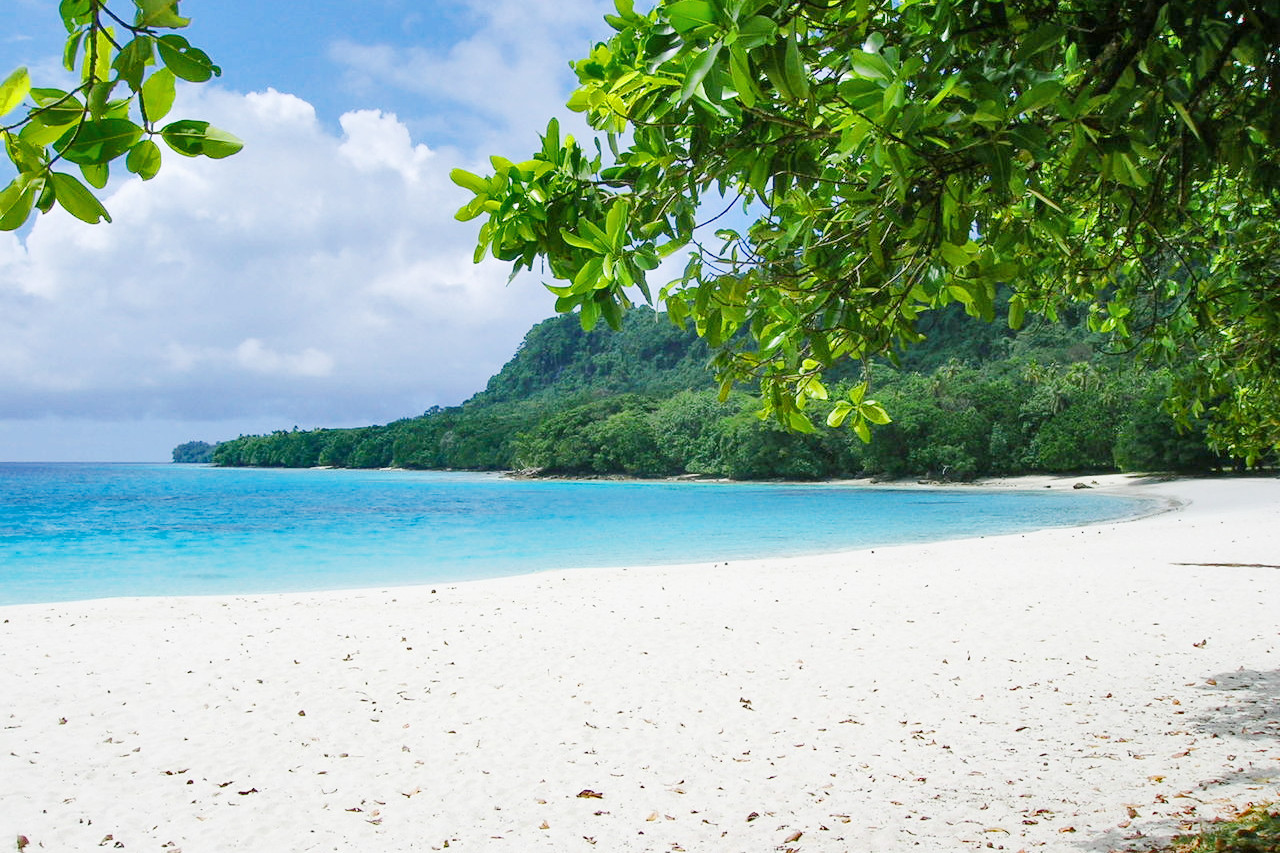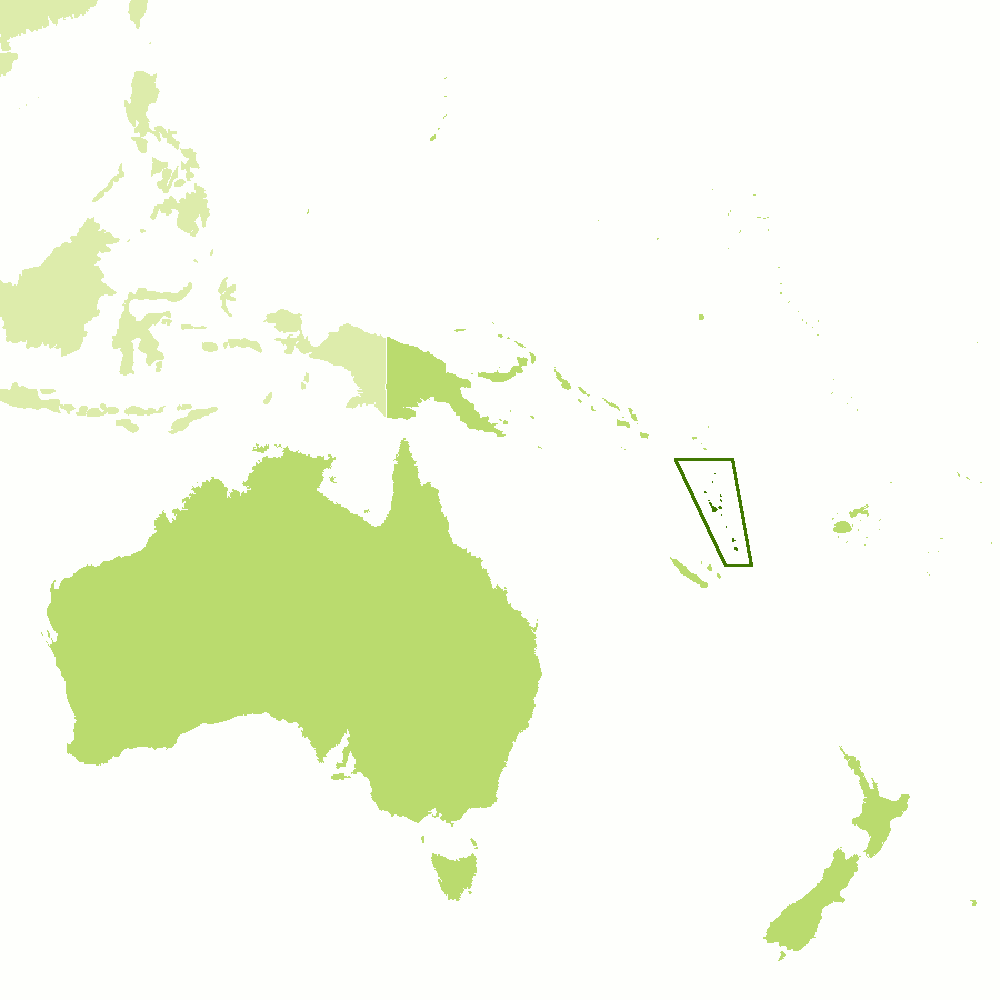The Climate of
Vanuatu
 Champagne Beach, Espiritu Santo
Champagne Beach, Espiritu Santo
What is the climate of Vanuatu like?
Vanuatu is a Y-shaped chain of more than eighty islands located northeast of Australia in the South Pacific Ocean. There are thirteen main islands. The larger islands are mountainous and hilly.
Vanuatu has a hot, rainy climate—tropical in the north and subtropical in the south. In the north, conditions are hot and humid with little difference between seasons; in the south temperatures and rainfall are lower and there are noticeable seasons.
In general the climate is hot, with humidity averaging 83 percent year-round. Average midday temperatures in the capital, Port Vila, range from 26°C (80°F) in winter to 31°C (88°F) in summer. The months between May and October are when the southeastern trade winds blow, moderating the climate a little. Winds are variable during the remainder of the year, when cyclones may occur.
There is abundant rainfall. Being south of the equator, Vanuatu has its season of maximum rainfall between November and April, but sudden tropical showers can occur anytime. The amount of rainfall varies with altitude and with exposure of the coast to the dominant southeast trade winds. The number of wet days varies from island to island much less than the amount of rain. Rainfall in Port-Vila averages about 2,400 millimeters (94 inches) per year, with a high of about 4,000 millimeters (160 inches) in the northern islands. During November to April, the islands are threatened by tropical cyclones.
The climate may generally be described as pleasant, although the combination of high temperature and humidity can be a little oppressive when not tempered by sea breezes or a brisk wind. The country has moderately large amounts of sunshine, averaging from six to eight hours a day. Much of the rainfall comes in short, heavy showers, often after a sunny morning, but longer periods of heavy rain lasting a day or so occur in the wetter months.
| Climate data for Port Vila | |||||||||||||
|---|---|---|---|---|---|---|---|---|---|---|---|---|---|
| Month | Jan | Feb | Mar | Apr | May | Jun | Jul | Aug | Sep | Oct | Nov | Dec | Year |
| Average high °C (°F) | 31.3 (88.3) | 31.2 (88.2) | 30.8 (87.4) | 29.9 (85.8) | 28.8 (83.8) | 27.4 (81.3) | 26.4 (79.5) | 27.0 (80.6) | 27.7 (81.9) | 28.5 (83.3) | 29.2 (84.6) | 30.7 (87.3) | 29.1 (84.4) |
| Daily mean °C (°F) | 26.4 (79.5) | 26.5 (79.7) | 26.3 (79.3) | 25.3 (77.5) | 24.1 (75.4) | 23.0 (73.4) | 22.1 (71.8) | 22.0 (71.6) | 22.7 (72.9) | 23.4 (74.1) | 24.6 (76.3) | 25.7 (78.3) | 24.3 (75.7) |
| Average low °C (°F) | 22.5 (72.5) | 23.0 (73.4) | 22.6 (72.7) | 22.0 (71.6) | 20.2 (68.4) | 19.8 (67.6) | 18.2 (64.8) | 18.0 (64.4) | 18.4 (65.1) | 19.6 (67.3) | 20.7 (69.3) | 21.7 (71.1) | 20.5 (68.9) |
| Average precipitation mm (inches) | 316.1 (12.44) | 273.7 (10.78) | 320.9 (12.63) | 255.2 (10.05) | 210.3 (8.28) | 180.0 (7.09) | 94.4 (3.72) | 87.4 (3.44) | 87.3 (3.44) | 134.1 (5.28) | 192.3 (7.57) | 187.2 (7.37) | 2,338.9 (92.09) |
| Source: Deutscher Wetterdienst | |||||||||||||
References
- E. A. Pearce, Charles Gordon Smith, (1990) The Hutchinson World Weather Guide, John Murray Press. ISBN 1859863426
- Timothy L. Gall, (ed.), (2003), Worldmark Encyclopedia of the Nations, Eleventh Edition, Thomson Gale
- Hugh Chisholm, (ed.), (1911), Encyclopædia Britannica, Eleventh edition, Cambridge University Press
The Climate of
Vanuatu

In summary:
Vanuatu’s climate is tropical, moderated by southeast trade winds from May to September each year. It is hot, with humidity averaging 83 percent year-round. Average midday temperatures in Port-Vila range from 25°C (77°F) in winter to 50°C (86°F) in summer.
Rainfall averages about 2400 mm (94 in) per year, with a high of about 4000 mm (160 in) in the northern islands. During November to April, the islands are threatened by tropical cyclones.